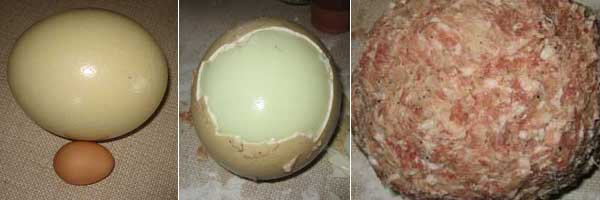
Remember that crazy Deviled Ostrich Egg we wrote about the other day? If the Deviled version of an Ostrich egg is too healthy for you, why not try a Scotch Ostrich Egg instead? A Scotch Egg is usually a hard boiled egg wrapped in meat, coated in breadcrumbs, then deep fried. These guys wanted their Scotch Egg Supersized!
From: http://www.blogjam.com/2005/05/15/scotch-ostrich-egg/
...For those who don’t know, the scotch egg was indeed invented in Scotland, where hard-boiled eggs are often wrapped in a layer of sausage meet (possibly to protect them from the cold weather), then dipped in breadcrumbs before being deep fried. While this may sound unappetising, any seasoned scotch egg fanatic will gladly attest that this strange hybrid is one of nature’s most delicious picnic staples.
[CONTINUED]
Reaction to last month’s mammoth pork pie post was almost universally favourable, but the most intriguing response came from reader JB, who suggested that I construct a scotch egg, using an ostrich egg rather than the more usual chicken’s egg. So I did.
For those who don’t know, the scotch egg was indeed invented in Scotland, where hard-boiled eggs are often wrapped in a layer of sausage meet (possibly to protect them from the cold weather), then dipped in breadcrumbs before being deep fried. While this may sound unappetising, any seasoned scotch egg fanatic will gladly attest that this strange hybrid is one of nature’s most delicious picnic staples.
First, the egg. I managed to procure one from Gamston Wood Ostriches, a Nottinghamshire-based ostrich breeding center. The ostrich hen can lay as few as ten eggs per year, so they’re quite expensive (mine cost £10), but in terms of bangs-per-buck they’re pretty impressive, as you can see from the image below.
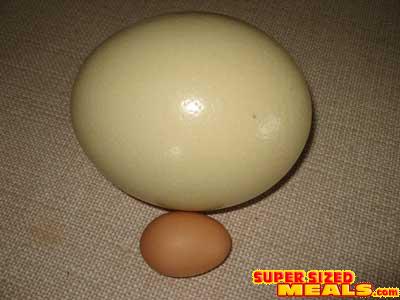
Boiling an ostrich egg is not quite as simple as it sounds. For a start, you need a saucepan with a vast capacity. Even using my biggest pan, the top fifth of the egg is exposed during the cooking process, so I keep a close eye on things, rotating the egg frequently and topping up the water as it evaporates.
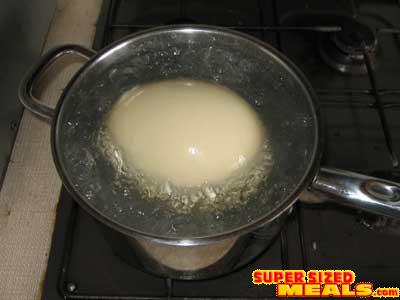
After 90 minutes, I remove the egg from the heat, cooling it down in a sink full of cold water. Once the egg is cool enough to handle comfortably, I begin to remove the shell, exposing the translucent white interior beneath.
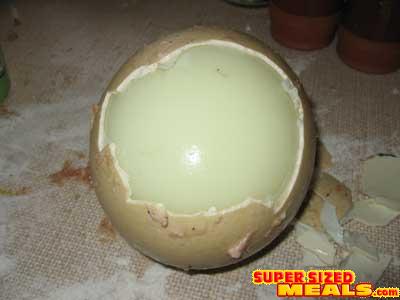
With the egg now ready for its coat of pork, I add some seasoned flour to a kilo of sausage meat, knead it for a bit, then flatten it to a thickness of about half an inch, and carefully wrap it around the now-naked ovum.
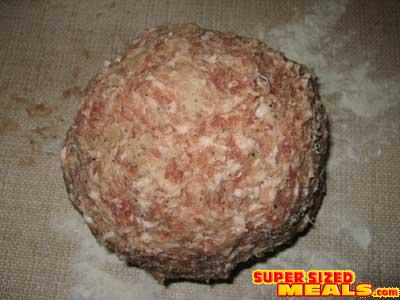
Brushing the exterior with a beaten chicken egg to provide an adhesive surface, I coat the moistened, gleaming meat-globe with breadcrumbs. Rather amazingly, it does actually look like a scotch egg.
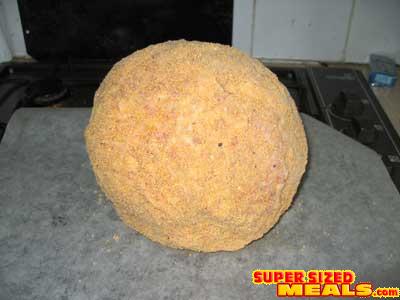
I decide to roast my creation rather than deep-fry it, mainly because I lack the correct facilities, so into the oven it goes - 45 minutes at 180°C/350°F (gas mark 4) - before being removed and chilled overnight.
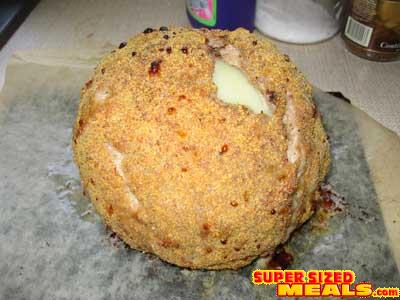
Apart from a couple of fissures in the surface, where gravity has pulled away at the coating’s molecular structure, I’m very happy with the result. Cutting the egg in half to reveal its enticing two-tone innards, I carve myself a slice, settle down in front of John Craven’s Countryfile on BBC1, and take a bite.
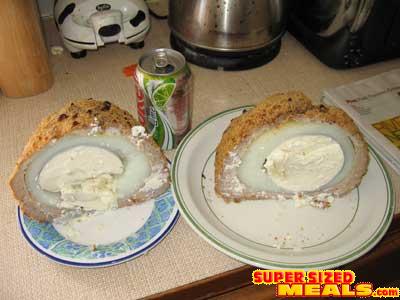
Perhaps surprisingly, it tastes like a normal scotch egg. Maybe this should not come as such a shock, but it does. The white is slightly creamier that that of a chicken egg, and a solo mouthful of this can be a little disconcerting, but a bite that takes in all the various elements is quite delicious.
All in all, it’s been a great success. Although costing in excess of £15 to make, I can see a day where these creations are vacuum-packed and sold by the half-dozen, with food-lovers the World over delighted by their novelty and expense. Just remember where you read about it first.
SupersizedMeals.com
http://www.supersizedmeals.com/food/article.php/20070702-Scotch_Ostrich_Egg